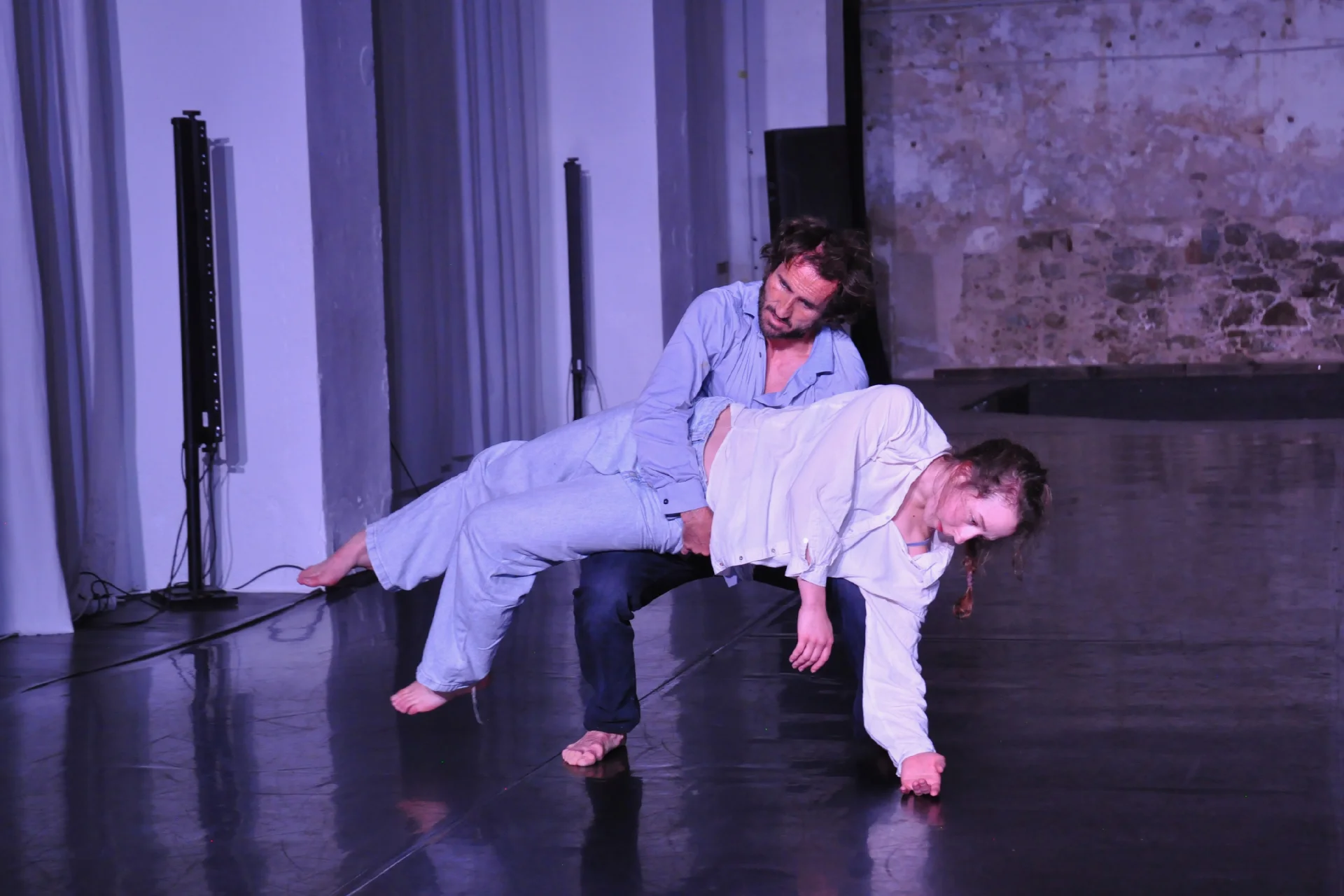Contact Improvisation
About Contact Improvisation

Contact Improvisation (CI) is a contemporary dance practice that emerged in the 1970s, initiated by dancer and choreographer Steve Paxton. It is based on the exploration of physical contact and shared weight between dancers, using principles of gravity, momentum, and trust to create spontaneous, improvised movement. Dancers maintain a point of contact, typically through touch, which becomes the focal point for movement as they navigate balance, counterbalance, and unexpected shifts in weight. The form encourages a heightened awareness of one's own body and the partner's body, blending intention with a willingness to respond in the moment, often resulting in organic and fluid motion.
Beyond the physical, CI fosters a deep sense of connection and communication between dancers, inviting them to be fully present and to listen with their bodies. It is practiced in a wide variety of settings, from dedicated dance studios to outdoor landscapes, often in workshops, jams, and festivals worldwide. The practice is accessible to people of all movement backgrounds, as it emphasizes trust, curiosity, and creativity over technical expertise. CI has also gained recognition as a tool for personal growth and body awareness, providing practitioners with a unique, collaborative space to explore boundaries, deepen sensitivity, and experience the joy of shared movement.
Modul exemple 2
In my ongoing journey with Contact Improvisation (CI), as dancer, researcher and teacher, I've identified a few subjects that are of my particular interest, and that I find also essential to understanding the mechanics and artistic potential of CI. Below, I share some examples of these subjects, offering a glimpse into the insights and techniques I explore and develop through my teachings.
Falling
Safely exploration of falling, meeting the ground with control. Through warm-ups, joint softening, and partnered exercises, participants build confidence, learning to trust their bodies' natural intelligence and find momentum for a "flying" sensation.
Flying
Introduces safe lifting and being lifted by exploring momentum and taking advantatge of our natural body weight. Participants learn to trust the fall and use flow rather than strength, protecting joints and muscles. Through guided partner exercises, dancers experience the lightness and freedom of "flying" with ease and support.